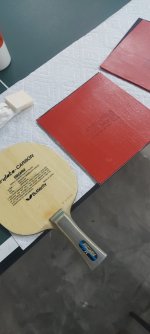says
2023 Certified Organ Donor
says
2023 Certified Organ Donor
Well-Known Member
BB said:Basically Freitas is trying to minimize the deceleration force.
I think BB is barking up the right tree in part. Increasing the amount of time you can hold the ball is about slowing it all down at impact... then shooting it out. That requires a soft touch... with acceleration. This is what Carl is talking about serving with great spin. This concept also applies to counter-looping incoming heavy topspin with a soft grip and great acceleration. This gives max spin without max impact transferred to the ball. You also get great ease of controlling that incoming topspin. FX-P and Karis are two great rubbers at doing this against an incoming loop.
One can transfer the maximum possible amount of force to the ball be firming up strong right at impact. You get great penetration to sponge, great wrap on ball of topsheet, great rebound force from blade/sponge/topsheet… resulting in hyper spin and speed depending on how solid, tangential, or solid/off center you impacted the ball. This is the argument Lightzy is making. The spin and speed are there from the firming up at impact, but it doesn't make the dwell longer... but it sure as heck delivers a mountain of pop to the ball and makes the ball move out with pace and spin. This is how 90 lb kids bang the ball so hard. Once they are able to whip it more, they get even more spin (more power) to go with that pace.
This last impact above, there is also use of dwell. It is still catching and throwing, but at a higher impact force and bat speed.











